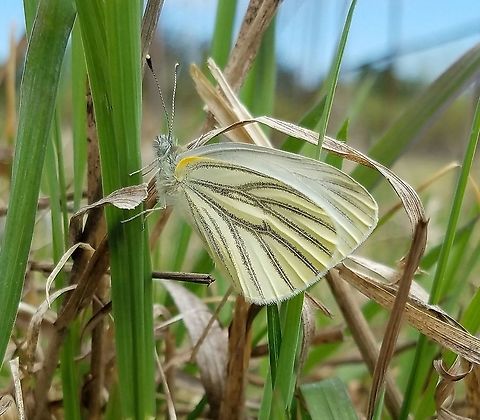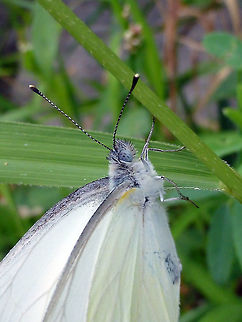
Naming
* ''Pieris napi'' – green-veined white⤷ ''Pieris virginiensis'' – West Virginia white
⤷ ''Pieris marginalis'' – margined white

Behavior
Because of changing climate conditions, broods are expanding farther north.There has been a steady decline in the populations of ''P. oleracea,'' which is being attributed to either climate change, the expansion of the toxic garlic mustard plant, human development, or, most likely, a combination of these factors.
During the day, males observe the population to look for females to mate with.
Habitat
These butterflies are found in prairies, near streams, and in moist deciduous areas. In the spring, they are found more readily in the moist areas, either the woodlands or open fields.''P. oleracea'' is a biovoltine species, meaning it tends to have two broods seasonally. The time in which they fly can depend on the area the inhabit. Usually, the butterflies migrate once in June, and once again in late July. However, in southern Ontario, there can be three to four generations, and farther up north it has been observed where there is only one generation.
Reproduction
''P. oleracea'' larvae are yellow and shaped like cones, with vertical ridges. Larvae that are mature have many black spots with a green body, dark dorsal stripe, and short, dense hairs. The pupae can range in color from brown to white to green, and have dorsal and apical projections.References:
Some text fragments are auto parsed from Wikipedia.